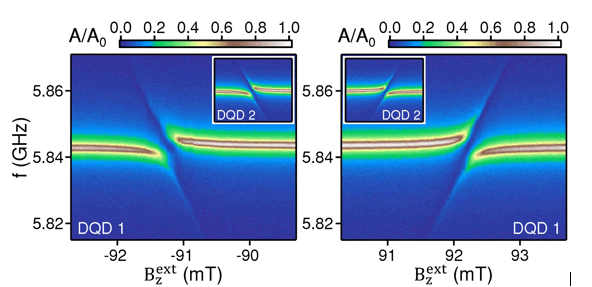Abstracts
Poster Abstracts | Talk Abstracts
Towards microwave assisted spin-spin entanglement
Presenting Author: Jason Petta, Princeton University
Contributing Author(s): Xiao Mi, Felix Borjans, Xanthe Croot, Felix Schupp, Monica Benito,
Stefan Putz, David Zajac, Jacob Taylor, and Guido Burkard
Electron spins are excellent candidates for solid state quantum computing due to their exceptionally long quantum coherence times, which is a result of weak coupling to environmental degrees of freedom. However, this isolation comes with a cost, as it is difficult to coherently couple two spins in the solid state, especially when they are separated by a large distance. Here we combine a large electric-dipole interaction with spin-orbit coupling to achieve spin-photon coupling. Vacuum Rabi splitting is observed in the cavity transmission as the Zeeman splitting of a single spin is tuned into resonance with the cavity photon. We achieve a spin-photon coupling rate as large as \(g _s/2 {\pi}\) = 10 MHz, which exceeds both the cavity decay rate \({\kappa}/2{\pi}\) = 1.8 MHz and spin dephasing rate \({\gamma}/2{\pi}\) = 2.4 MHz, firmly anchoring our system in the strong-coupling regime. Moreover, the spin-photon coupling mechanism can be turned off by localizing the spin in one side of the double quantum dot. Recent progress towards microwave assisted spin-spin entanglement will be presented.

(Session 12 : Tuesday from 1:30pm - 2:15pm)
- Home
- SQuInT
- Registration
- Program
- Instructions for Presenters
- Survey
- Lodging and Transportation
- Hotel Floor Maps (.pdf)
- Faculty Favorites at Old Town
- Past SQuInT Meetings
SQuInT Chief Organizer
Akimasa Miyake, Associate Professor
amiyake@unm.edu
Rafael Alexander, Postdoctoral Fellow
Chris Jackson, Postdoctoral Fellow
SQuInT Administrator
Gloria Cordova
gjcordo1@unm.edu
505 277-1850
SQuInT Assistant
Wendy Jay
SQuInT Founder
Ivan Deutsch, Regents' Professor, CQuIC Director
ideutsch@unm.edu
